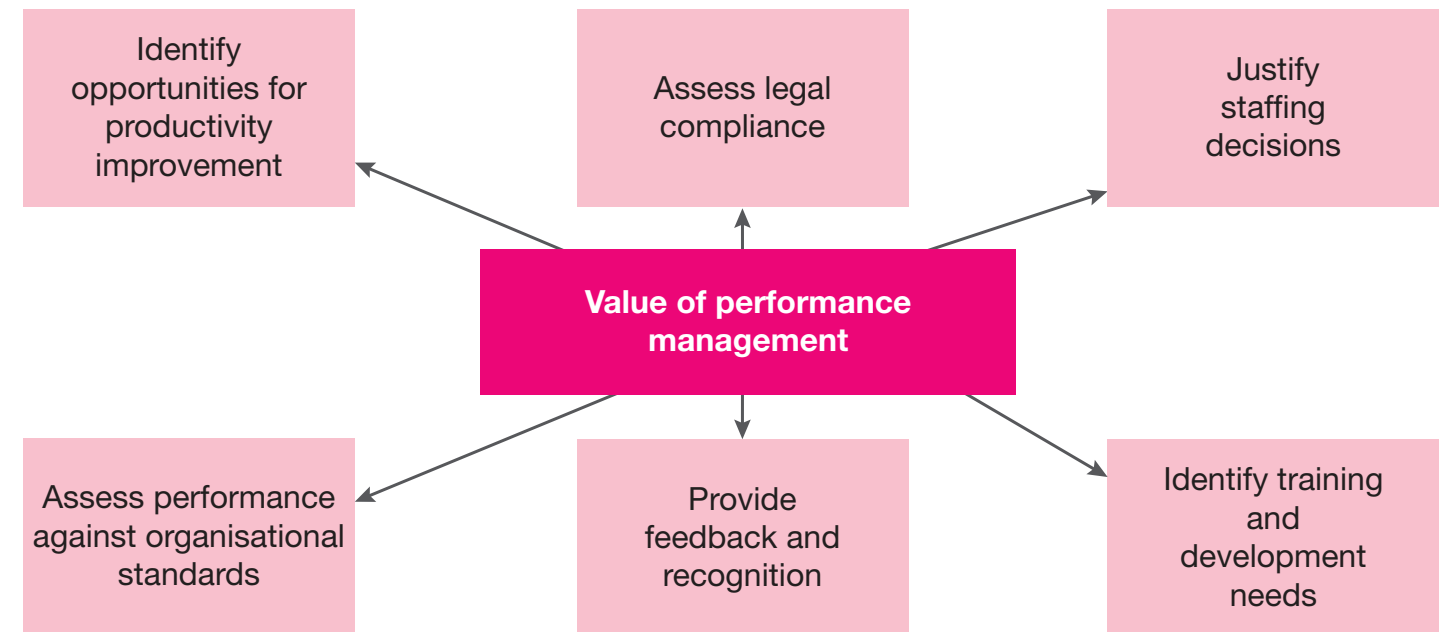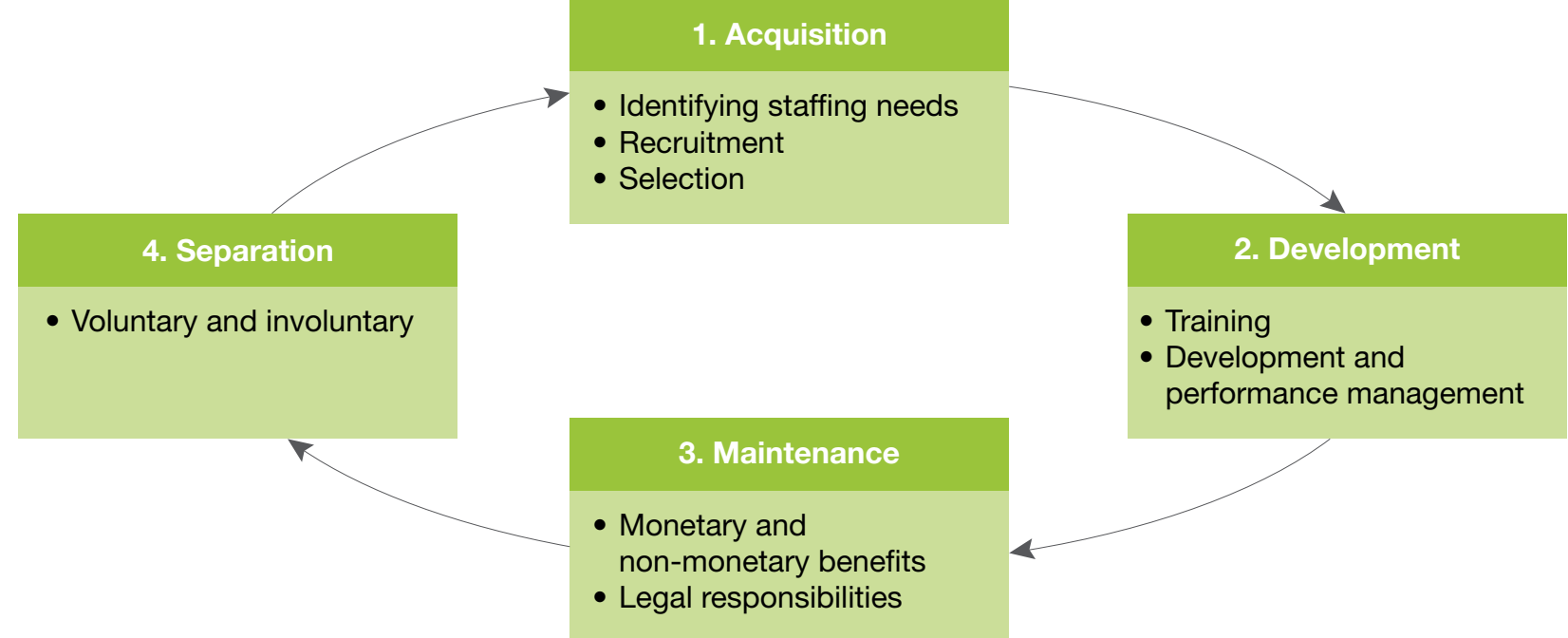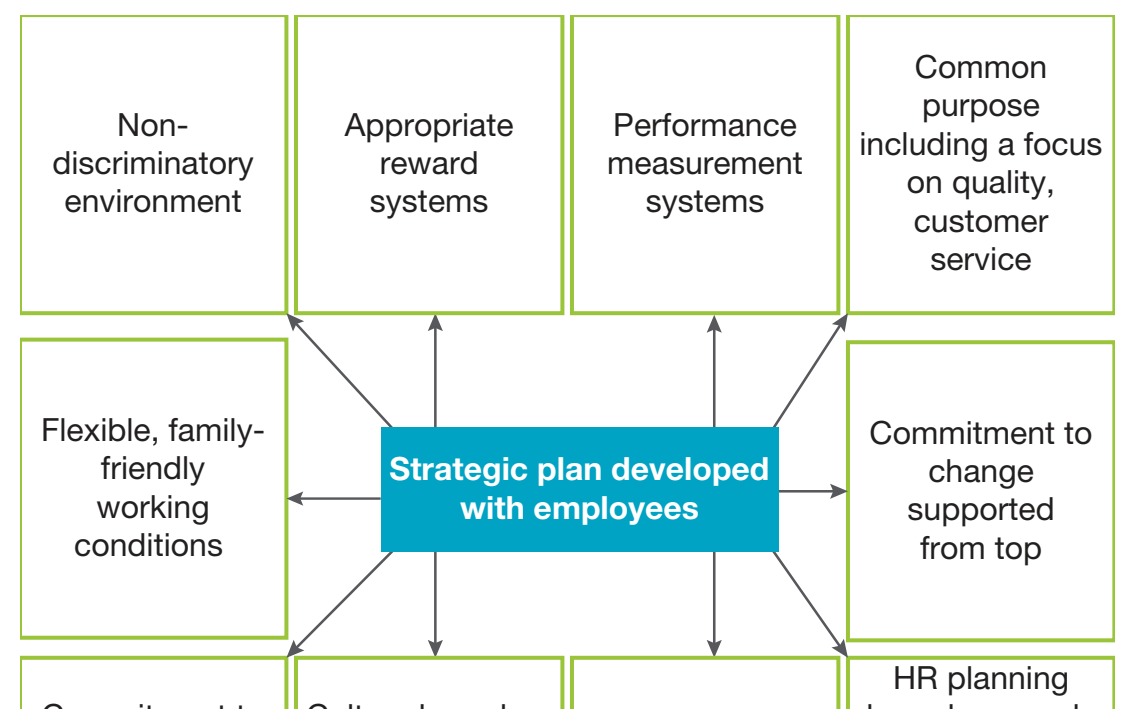Photo AI
Last Updated Sep 24, 2025
Training in HRM Simplified Revision Notes for NSC Business Studies
Revision notes with simplified explanations to understand Training in HRM quickly and effectively.
339+ students studying
Training in HRM
Introduction
Human Resource Management (HRM) training programmes enhance employee skills and align with company goals. For instance, a fast-food chain improved customer service through targeted training. Organisations investing in strategic training observe 37% higher productivity, benefiting both employees and organisations by increasing efficiency and motivation.
Introduction to Human Resources Functions
Human Resources (HR): HR oversees personnel management within an organisation. Key responsibilities include:
- Recruitment and Selection: Identifying and hiring suitable candidates.
- Ensures alignment with company goals by securing the right personnel.
- Training and Development: Fostering skills for current and prospective roles.
- Performance Management: Continuous evaluation to achieve performance standards.
- HR contributes to a sustainable workforce by:
- Aligning recruitment with company objectives.
- Offering essential training programmes.
Strategic Role of Training and Skills Development in HRM
Strategic Importance of Training
Training and Skills Development: Initiatives to enhance employee capabilities through workshops, seminars, and structured learning. These are aligned with organisational goals.

Correlation with Success: Comprehensive training programmes are intrinsically linked to organisational success.
Relationship Between Employee Value, Motivation, and Development
- Development boosts motivation and retention rates.
- Motivated employees enhance innovation and morale.
Benefits of Motivated Employees:
- Encourages innovation.
- Strengthens team morale.
Identification of Training Needs
Methods:
- Performance Appraisals: Identifying areas requiring improvement.
- Surveys and Interviews: Understanding preferences and career aspirations.
Example: Aligning skill programmes with strategic goals has increased operational efficiency by 25%.

Examples and Best Practices
- Toyota's Case Study: Lean management practices encourage ongoing improvement.
- Strategies: Regular skill assessments ensure training aligns with company objectives.
Impact on Strategic Alignment
Training initiatives enhance strategic capabilities, increasing market competitiveness.

Metrics of Success:
- Increased productivity.
- Breakthroughs in innovation.
- Improved leadership skills.
Methodologies for Designing Training Programmes
- Needs Assessment: Determine training requirements by evaluating existing skills.
- Example: A retail chain utilises customer satisfaction surveys to customise training.
Best Practices:
- Conduct anonymous surveys to ensure honest feedback.
- Conduct regular interviews for deeper insights.
-
Setting Objectives: Define clear, measurable goals, such as increasing sales by 10% yearly.
-
Choosing Training Methods:
Method Pros Cons Workshops Interactive and engaging Can be cost-intensive Seminars Informative and structured Potentially low engagement E-learning Flexible, scalable, accessible anytime Requires technology and self-discipline Mentoring Offers personal guidance and skill refinement Relies on mentors' availability

Implementation Strategies
-
Example: An IT firm employs an LMS to standardise training.
-
Checklist:
- Ensure leadership support.
- Utilise tools such as Zoom for virtual sessions.
- Implement platforms like Moodle.
- Monitor and adjust using analytics.
Importance of Evaluation and Feedback Loops
- Feedback Loops: Utilise ongoing cycles for improvements. Educational institutions use feedback to enhance teaching methods.
- Evaluation Metrics: Measure success through pre- and post-training assessments (e.g., competency improvements).
Emerging Trends in Training
- Trends: Integration of gamification and Virtual Reality (VR).
- Scenario: Using VR to create engaging history lessons.
Impact of Training Initiatives on Organisational and Employee Benefits
Direct Benefits for Employees
- Productivity: Development programmes increase productivity by targeting essential skills.
infoNote
Training initiatives foster a 37% productivity boost.
- Job Satisfaction and Motivation: Ongoing training maintains satisfaction and motivation, elevating morale.
- Career Development: Skill advancement opens new career opportunities.
chatImportant
Case Study: Certification resulted in advancement from junior to senior management.
Indirect Benefits for Organisations
- Retention Rates: Effective training lowers turnover, retaining experienced staff.

- Enhanced Efficiency: Improved workflows lead to greater efficiency.

- Innovation and Adaptability: A learning culture stimulates innovation in dynamic markets.
Statistical Supports and Examples
- Research Findings: Training contributes to higher productivity and satisfaction.
- Examples: Companies with mentorship programmes report elevated development levels.
Case Studies
- Company Study: Strategic training enhances productivity and engagement by:
- Leadership Development: Bolsters managerial competencies.
- Technical Workshops: Delivers comprehensive training.
Impact Summary: Strategic training greatly improves engagement and productivity.
Skills Development Act (SDA)
Skills Development Act (SDA): Enacted in 1998 to enhance employment and spur economic growth by developing skills.
- Objectives:
- Education and Employment: Aligns education with job market needs.
- Productivity: Skill training strengthens sector competitiveness.
- Empowerment: Provides workers with current skills.
Impact on Training Programmes
- Influence: Aligns training with national objectives.
- Financial Incentives: Encourages investment in training.
- Scenario: A tech company leveraged incentives for software training, achieving a 20% productivity boost.
Sector Education and Training Authorities (SETAs)
- Role: Guide skill development within specific industries.
- Example: SETAs facilitated IT programmes, increasing employment by 15%.
- Compliance: Adhering to the SDA secures benefits and strengthens market positioning.

Key stakeholders: Companies, SETAs, and Government play crucial roles.
Measuring Training Effectiveness in HRM
Key Metrics and Indicators
- Performance Appraisals: Evaluation before and after training.
- Turnover Rates: Effective training minimises turnover.
- Sales Volume: Reflects training impact in sales roles.
- Employee Feedback: Vital for refining training programmes.
- Skill Utilisation: Demonstrates training effectiveness through skill application.
- Engagement: Increased engagement signals training success.
Methodologies for Measuring Effectiveness
- Kirkpatrick's Model: Evaluates Reaction, Learning, Behaviour, and Results.
- ROI Analysis: Assesses cost-to-benefit ratio.
Simple ROI Formula:
- Example: Training costs £1,000, resulting in £5,000 additional sales.
- ROI = 400%.
Best Practices for Enhancing Training Outcomes
-
Feedback Utilisation: Continuous improvement of training programmes.
-
Leadership Support: Cultivates a positive learning environment.

Challenges and Solutions
-
Resource Allocation: Requires meticulous planning.
chatImportantSolution: Implement technology like online platforms to boost efficiency.
-
Metric Selection: Inaccurate metrics can lead to misguided assessments.
chatImportantSolution: Engage experts to choose appropriate metrics.
500K+ Students Use These Powerful Tools to Master Training in HRM For their NSC Exams.
Enhance your understanding with flashcards, quizzes, and exams—designed to help you grasp key concepts, reinforce learning, and master any topic with confidence!
50 flashcards
Flashcards on Training in HRM
Revise key concepts with interactive flashcards.
Try Business Studies Flashcards5 quizzes
Quizzes on Training in HRM
Test your knowledge with fun and engaging quizzes.
Try Business Studies Quizzes9 questions
Exam questions on Training in HRM
Boost your confidence with real exam questions.
Try Business Studies Questions1 exams created
Exam Builder on Training in HRM
Create custom exams across topics for better practice!
Try Business Studies exam builder54 papers
Past Papers on Training in HRM
Practice past papers to reinforce exam experience.
Try Business Studies Past PapersOther Revision Notes related to Training in HRM you should explore
Discover More Revision Notes Related to Training in HRM to Deepen Your Understanding and Improve Your Mastery
Load more notes